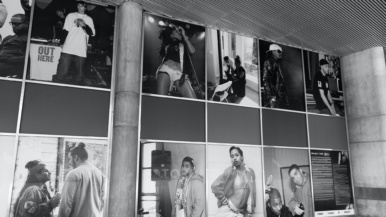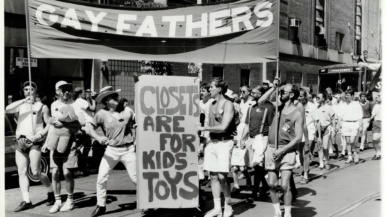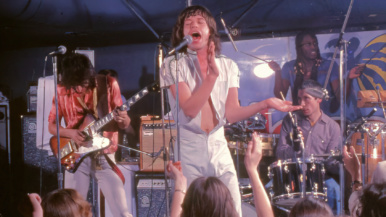Eleven bizarre vintage photos from Toronto’s 1970s art scene

In the late 1970s, just about every young person in Toronto seemed to be playing in a band, publishing an indie magazine or throwing wild art parties. But you’d never know it—that era of the city’s art history is hardly documented. Curator Philip Monk hopes to remedy that with Is Toronto Burning?, a new book about Toronto’s underground art scene in the late 1970s. “I want to bring Torontonians to their own history,” he says. We asked Monk to share the stories behind some of the most striking photos from the book.

“David Buchan was a queer performance artist, photographer and the stage manager for Glamazon, a 1975 camp runway show about the history of fashion. This image is from Fashion Burn, a show he did in the summer of 1977 inspired by Glamazon. It took place in a punk club behind the Royal Alexander Theatre called Crash and Burn. It’s a key moment: the music and art scene connected with each other. Everybody participated in each other’s works. These models—some of them were performance artists, some of them strippers—are wearing costumes Buchan made out of waste material.”

“Buchan created an alter-ego named Lamonte Del Monte, a song-and-dance man on the bottom rungs of the entertainment scene who pretended he was much more than he was. This is his fictional family tree: musicians, video artists, painters. All of them are from the art community. Buchan is the one in the front row with the striped pants. The person on the right—with his elbow on his knee and his hand to his forehead—is the photographer, George Whiteside.”

“This photo is part of the same series of fake family photos. It’s a character named Mooch Dumbrowski.”

“Downtown Toronto was a wasteland. During the daytime, on Queen Street between Spadina and Beverley, the only people you’d see were winos or members of the art community. That whole area was deserted and unsupervised, so it was a hidden community. You had this underground arts scene to discover, where there weren’t any rules but to learn the lingo. The Cabana Room, a club at King and Spadina, was a key to unlocking this subculture and being accepted into it.”

“The Cabana Room opened in the fall of ’79, when Donna Summer’s ‘Bad Girls’ had just come out. The video artist Colin Campbell created a video piece of the same name. He dons drag to play a young woman from Thornhill who wants to be part of the art community. She works in one of the bank towers as a Xerox operator, which is exactly what Campbell did. Whenever she tries to get into the Cabana Room, she is denied at the door. Finally, she gets in by fluke and becomes a star in the club. The tape is set in a fictional Cabana Room, modelled on the real thing. It’s an allegory of admission into the art community.”

“Various clubs and collectives had their own house bands. The Crash and Burn had the The Diodes (above). General Idea, a group of New Wave artists, had The Dishes, who were a bit more glamorous.”

“The art collective General Idea mimicked formats like TV, documentary and magazines. In this photo, they’re inhabiting a rock band. I mean, they don’t know how to play instruments, they were using The Dishes’ equipment, and the band’s lead singer was the photographer.”

“The Centre for Experimental Art and Communication, the organization that owned Crash and Burn, also published a magazine called Strike. The Centre eventually radicalized itself and became very political, and the magazine became an advocate for kneecapping. After the kidnapping and assassination of the Italian minister Aldo Moro in 1978, they ran a cover with a photo of his two dead bodyguards. The Toronto Sun discovered it after it was leaked by the printers. They reported on the cover, which caused the Centre to lose its funding.”

“Every five years, there’s a huge art event in Germany called Documenta that lasts for 100 days. This photo is from Documenta VI in 1977. The guy on the left in the fedora is Joseph Beuys, a famous artist who had a worldwide reputation—he had started his own political party and a utopian school of thought. He invited Amerigo Marras, the mastermind behind the Centre for Experimental Art and Communication, to talk about the Centre’s political position in a Violence and Behaviour workshop.”

“The married artists Carole Condé and Karl Beveridge were highly politicized: they eventually became Marxists and believed that artists were supposed to serve the proletariat struggle. You can see that in this image, part of a photo-novella. It’s the story of a hypothetical strike of the lower-middle class. Carol is the mother, Karl is the father, and those are their real children.”










